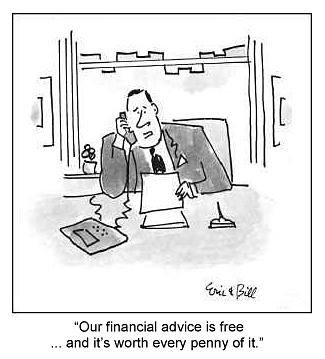Some lessons in life and marketing seem to be harder to learn than others. Today’s topic, which has been seeking a voice (outside of my own head, that is) for some time now, is a perfect example.
 |
|
(see Note 1 for credit)
|
Early in my career, I meet a printer (the old-fashioned, colourful human kind we see fewer of these days) who told me, “I can give this job to you three ways: good, quick or cheap. Pick any two.”
Think about that for a moment, from your own experience. The only real exception to this rule is profound technological change. In 1440, the Gutenberg printing press really did print anything that could run through it with better quality, and it did it faster and cheaper. Ever since then, advances in printing technology and the attendant advance in human knowledge, have been much less significant. Including the advent of the Internet. Despite what Al Gore may think.
In the marketing world, we should think about people in the same way. This is based on a couple of assumptions:
- Good marketing thinking and execution still comes from people who do it for a living.
- Good marketing thinking is not media-specific—a good idea has always required a deep understanding of the technology and demographics of the media you are using.
For the marketers out there:
Spending less on marketing talent may seem like a saving, but not if it takes them longer and certainly not if their ideas aren’t as good. Successful marketing is not about cost-containment, it’s about wisely maximising up-side. To think otherwise suggests you don’t believe that marketing really works, in which case, you may want to consider another line of work.
If you are a cost-containment marketer and you wonder why marketing partners with a record of successful results don’t seem to be very interested in working with you, here’s the simple reason why: they can make more money and do better work for marketers who are believers. Allow me to channel my printer-friend of yore with this: your marketing partner needs at least two of these three things from their relationship with you: the ability to make money, the ability to do great work and the opportunity to work with interesting and decent people. It doesn’t cut it in the long term if you’re just a great guy, or a great girl.
For the agency people out there:
Unlike, say, brain surgery, everyone has an opinion about marketing they think is valid (because for them, as a consumer, it is). You need to get over this—or take my advice above to cost-containment marketers. Instead of making the agency business sound like brain surgery, make it work like brain surgery. Good marketing actually is brain surgery, but the brain is the consumer’s, and thankfully, you’re working on it from the outside. You may also want to try collaborating like brain surgeons do, on the faith that if you can help make the sea rise and your ship is sound, you will rise with it. And yes, you can make your own ship sounder than the others you are floating with.
Is ‘giving it away’ a good new business strategy? Spec creative? Spec strategy? Not if you ever want to get the true value of your work (re-read Eric & Bill’s take on this, above). It makes much more sense to seek out a bit of work or a project at full price, generate results greater than your cost, and move forward. If what you’re selling is proven return on marketing investment, no enlightened marketer will nickel-and-dime you.
Then there’s the Internet complicating all of this. Instagram shocked its users in announcing that it intended to use their free user’s images for advertising purposes. Facebook has shocked a number of times in its slow but steady process of monetising its massive network by using the content its free users have provided about themselves. Why does this shock anyone? How do free users think their free service gets paid for? Facebook currently employs 3,000 very bright people and needs a server farm of over 180,000 server-machines. Who do you think pays for that?
This is where the increasingly-pervasive semi-permeable paywall strategy comes from—the strategy of luring customers in with little free things but charging for the good stuff, or getting them hooked on free stuff, then charging for it. Not exactly an Internet strategy by the way, drug dealers have been doing this forever.
Since 1995, when the web first started to popularise, we’ve spawned a generation of consumers who think everything on the Internet is free. The oldest of these people are nearing 30 years-of-age now, and they are becoming our clients and our partners on the agency side. Creating a broader belief in the value of marketing isn’t going to get any easier, but the most successful brands and companies will always be the ones that ask their customers to pay fairly for the real value they are getting.
I don’t have the answer for the everything-on-the-Internet-is-free mentality. I’ll just keep reminding anyone who cares to listen that since the beginning of our time on this planet, you get what you pay for, in the broadest sense of the ‘pay’ part. In work, in relationships and in life. It’s an immutable law of human metaphysics. And it isn’t brain surgery.
- One of Eric and Bill Teitelbaum’s “Bottom Liners”, 2013 Tribune Media Services, Inc., All rights reserved.





